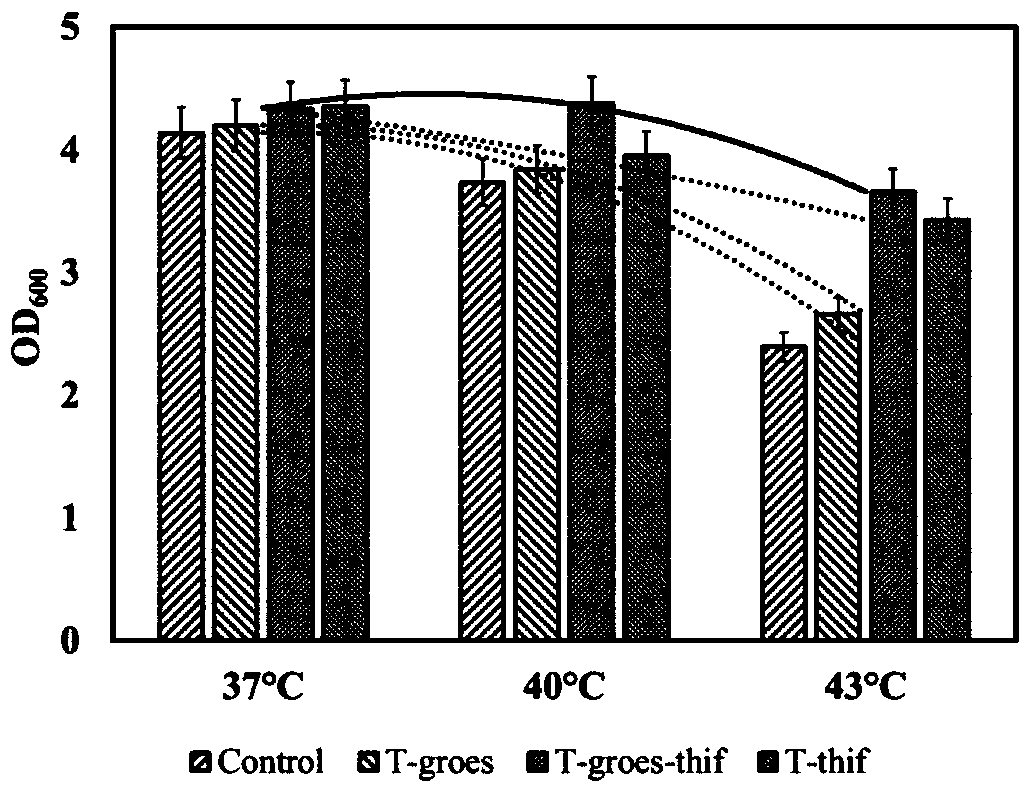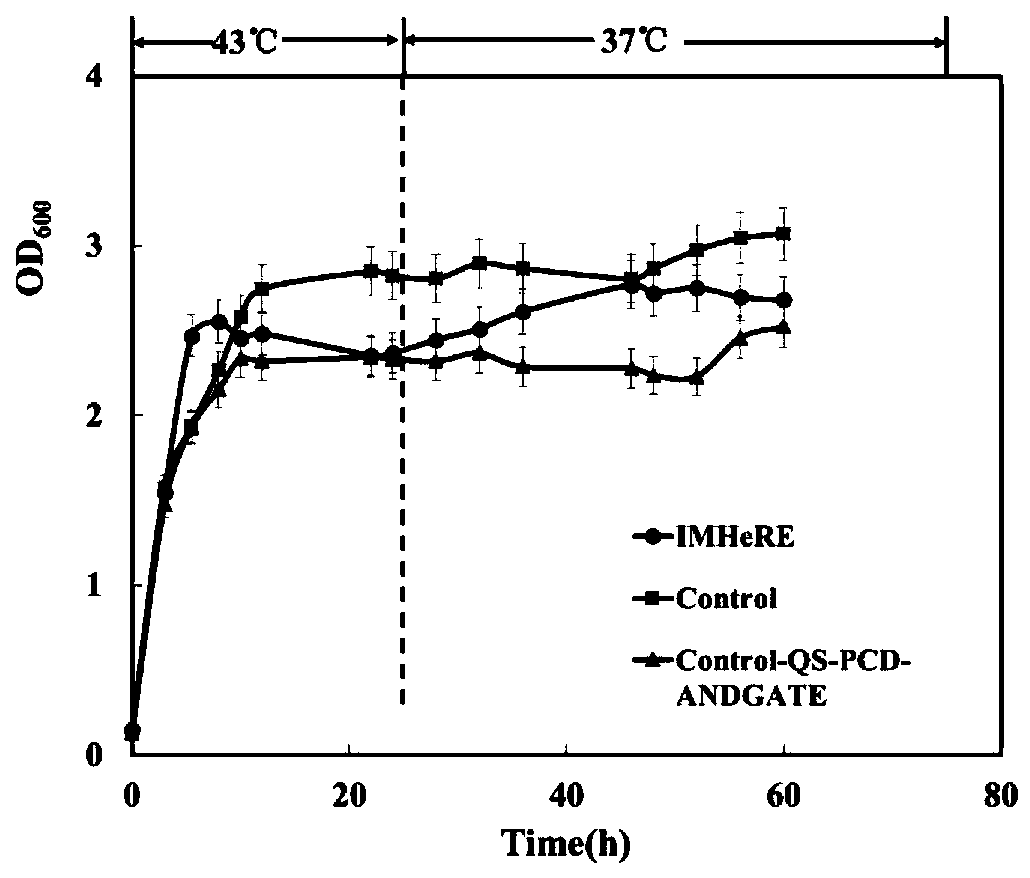A microbial intelligent cascade heat resistance regulation method
A technology of microorganisms and microorganisms, applied in the direction of microorganism-based methods, biochemical equipment and methods, microorganisms, etc., can solve the problems of high energy consumption in the production process, achieve the effects of improving production efficiency, reducing energy consumption, and increasing fermentation temperature
- Summary
- Abstract
- Description
- Claims
- Application Information
AI Technical Summary
Problems solved by technology
Method used
Image
Examples
Embodiment 1
[0023] Example 1: Design and Construction of Artificial RNA Thermosensitive Switch
[0024] Drawing on the basic structure of natural RNA thermosensitive switch, the structure of artificial RNA thermosensitive switch is mainly composed of RBS sequence (5'-AAGGAG-3'), ARBS (anti-RBS, antisense RBS sequence) and the loop between them. Structural composition. The secondary structure and free energy of RNA thermosensitive switch can be predicted and calculated by The mfold Web Server. The free energy of the RNA thermosensitive switch can be adjusted by changing the matching degree of the stem-loop base sequence, the G-C content and the size of the loop structure, so as to obtain the RNA thermosensitive switch responding to different temperatures. Therefore, according to the free energy simulated by The mfold Web Server, we designed a series of RNA temperature-sensitive switches with different gradient free energies. A library of RNA temperature-sensitive switch elements respondi...
Embodiment 2
[0034] Example 2: Assembly of cascade heat-resistant system
[0035] (1) Assemble a single-function temperature-sensitive heat-resistant system with a single functional heat-resistant element and a specific temperature-sensitive RNA temperature-sensitive switch: promoter-RNA temperature-sensitive switch-heat-resistant functional element, which is suitable for improving the heat resistance of Escherichia coli at a specific high temperature (2) Rational assembly of RNA temperature-sensitive switches with different temperature responses and heat-resistant functional elements with optimal temperature functions: promoter-RNA temperature Sensitive switch (T1°C)-heat-resistant functional element (T1°C)-promoter-RNA thermosensitive switch (T2°C)-heat-resistant functional element (T3°C)-...-promoter-RNA thermosensitive switch (Tn°C )-heat-resistant functional element (Tn°C) (T1°C<T2°C<...<Tn°C), suitable for expressing different heat-resistant functional elements at different temperatu...
Embodiment 3
[0036] Embodiment 3: Construction and assembly of population quantity system
[0037]In this method, a temperature-sensitive population quantity regulation system is constructed by integrating a quorum sensing system and an RNA temperature-sensitive switch. The RNA thermometer (RNAT12) and the promoter pluxR, which senses AHL concentration, constitute an AND-gate switch that responds to density and temperature. Microorganisms can grow freely during the fermentation process and are no longer limited by the concentration of quantity regulation. However, when the density is high enough, the heat released by microorganisms will increase accordingly. When the metabolic heat causes the system temperature to reach a certain value, the RNA thermometer will be turned on. The expression of the downstream toxin protein is initiated, resulting in cell death, but the cell concentration is not unlimited, and the final cell concentration will be controlled at the cell concentration set by th...
PUM
 Login to View More
Login to View More Abstract
Description
Claims
Application Information
 Login to View More
Login to View More - R&D
- Intellectual Property
- Life Sciences
- Materials
- Tech Scout
- Unparalleled Data Quality
- Higher Quality Content
- 60% Fewer Hallucinations
Browse by: Latest US Patents, China's latest patents, Technical Efficacy Thesaurus, Application Domain, Technology Topic, Popular Technical Reports.
© 2025 PatSnap. All rights reserved.Legal|Privacy policy|Modern Slavery Act Transparency Statement|Sitemap|About US| Contact US: help@patsnap.com



